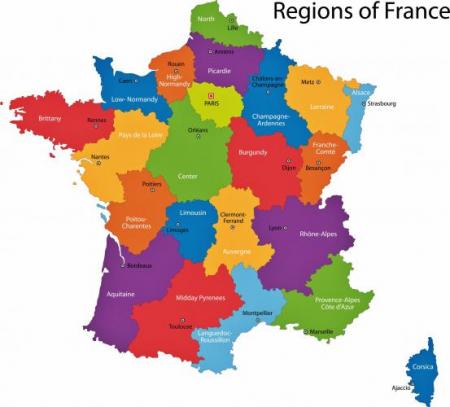Anil Taneja,
An aspect of France that is relatively unknown to the outside world is its strong culture of using natural stone. If it comes as a surprise to many industry professionals when they are told this it is because, by and large, most people associate a 'culture of stone' with the use for slabs, mostly for making countertops, or for producing tiles. This narrow approach to understanding the possibilities of natural stone, limited to judging whether the country is a big buyer of slabs or not, also prevents people from understanding the versatility of natural stone.
1 According to some industry professionals in the kitchen countertops segment, porcelain now occupies 60 to 70% market share. Others think its share is 50 to 60%. Either way it is clear that porcelain has currently become the preferred choice in France. It is estimated that just 2-3 years ago the market share was around 50% or a bit less. Granite is still used but mostly in the premium segment where slabs imported from Brazil are the most popular.
2. The materials currently most in fashion in France are Taj Mahal, Mountblanc, Patagonia. The problem for granite, according to industry observers, is that since it is widely used in cemeteries, the end consumer does not want to see it now on the kitchen countertop. This phenomenon also exists in other countries, once a particular granite is identified as being a tombstone material, it is no longer seen as an aesthetically desirable material for other applications.
3. The French market was booming till the end of the first half of 2023, but with rising inflation and higher interest rates, consumption was affected in the second half of 2023. Currently there is some slowdown in new projects being launched.
4. The French market remains somewhat chauvinistic with preference given to local materials as far as possible. However, in many big projects since the local quarries are relatively small in size, natural stone is imported, especially from the Iberian Peninsula. Imported stone is usually for installation as pavings, but also for other applications. Perhaps one of the biggest projects in the world in natural stone is currently being executed in France. An exterior paving project of 65000 square metres in 10 cm and 14 cm thickness, in grey granite, is going on in the city of Neuilly. The Spanish company, Granilouro, is supplying stone for this 7 years long project for which 3 years are still needed for completion.
5. Another distinctive characteristic of the French stone industry remains the strong emphasis on value addition. In this high income / high cost country the value addition comes from giving new textures and finishes to natural stone and incorporating design as much as possible in all possible applications.
6. One positive aspect of the French stone industry is that the vocational training schools in the country work quite well. There are several of them with a total of about 1000 students under training in different courses. A heartening feature of the Rocalia fair, held in Lyon in early December 2023, was the presence of a large number of young people assisting the different conferences and events held coinciding with the fair. This is not a normal sight in other trade show of the industry.
7. Masonry work is in fashion.
8. Split face finish is in fashion. The most prominent application of ornamental stone is in landscaping and in private gardens, and this is where this finish is most widely used.
9. Even in the rustic finish and use of thick stone there has been an evolution, and this is one more indication of the strong culture of natural stone in France. For example, the stones not only have thickness, but the architects are often knowledgeable enough to demand different forms that can be created from the thickness in their projects.
10. Marble seems to be coming back into fashion. In general, a noticeable trend is specifiers such as architects and designers are increasingly opting for marble in their projects.
11. When it comes to promoting natural stone the French organisations are doing it in a way that is not seen elsewhere. The efficiency of the different regional associations, especially from Britanny, Burgundy, Auvergne Rhone, Alps Midi Pyrénées, is seen in the way they have used as their selling argument, the Denomination of Origin (DO).

Orangesmail.com
NOTE: Thanks to Claude Gargi and Marc Spadaccini for the information provided.
